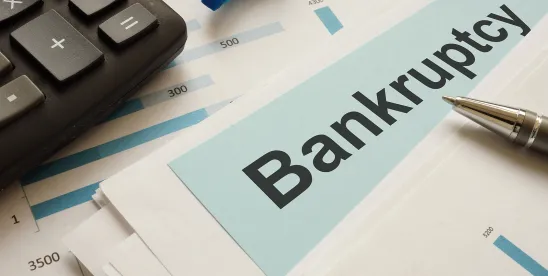In March, Miller Canfield noted that the previously expanded debt limits for bankruptcy cases under the Small Business Reorganization Act ("SBRA," a.k.a. "Subchapter V") and under chapter 13 were set to revert on June 21, 2024. In April, Senator Dick Durbin (Ill.) introduced a short bill, the 2024 Bankruptcy Threshold Adjustment Extension Act ("Extension Act," S.4150), which proposed to extend the debt limits for another two years. Because the Extension Act made no other changes to the SBRA or to chapter 13, many expected it would be enacted into law prior to June 21.
This did not happen. As a result, on Friday, June 21, 2024, these debt limits reverted to lower values. On that date, the SBRA debt limit reverted from $7,500,000 to $3,024,725[1] in noncontingent, liquidated debt.[2] Debtors with more than this amount of debt do not qualify to file a bankruptcy case under the SBRA, though they may still file traditional chapter 11 bankruptcy cases.
The chapter 13 debt limit also changed. The Bankruptcy Threshold Adjustment and Technical Corrections Act ("Corrections Act") had simplified and combined the chapter 13 debt limits into a single $2,750,000 threshold. Its expiration means that there are again two separate limits for chapter 13 cases. Now, to file a chapter 13 bankruptcy case, a debtor must have no more than $465,275 in unsecured debt, and no more than $1,395,875 in secured debt (again, counting only noncontingent, liquidated debt in each instance).
Because of the way the Corrections Act is worded, if the Extension Act eventually is passed as written, it may be interpreted as having retroactive effect.[3] Unless the Extension Act is revised to make this clear, however, there may be some uncertainty regarding the applicable debt limits for bankruptcy cases filed in the "gap period" between June 21 and whenever the Extension Act is passed and takes effect.
[1] The $3 million dollar figure is not an even dollar amount because it is adjusted for inflation every three years.
[2] The debt limits discussed here refer to how much noncontingent, liquidated debt a debtor may have and still qualify to file for bankruptcy protection. Generally speaking, a "contingent" debt is one that requires some event to happen before it is owed (e.g., a warranty claim owed only if a covered part fails). "Noncontingent" debts are those that lack such a requirement. A "liquidated" debt is one where the amount is known or can be readily determined. (e.g., the amount owed at any moment under a loan may not be stated in the note, but can be quickly computed by reference to its terms.)
[3] This is because the Corrections Act itself was designed to retroactively correct a prior reversion of the SBRA debt limit in 2022.







 />i
/>i

